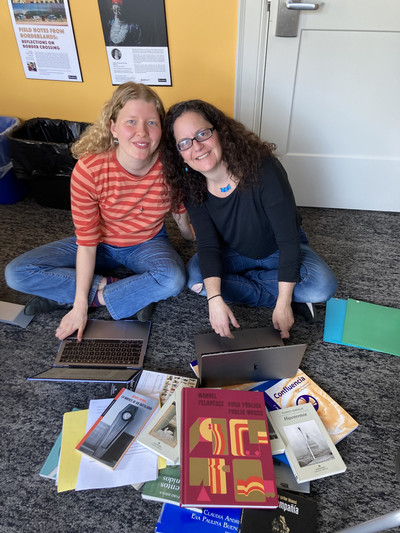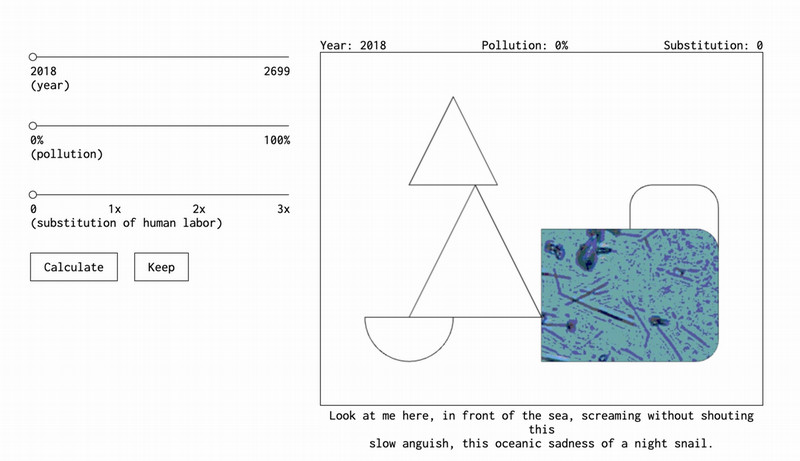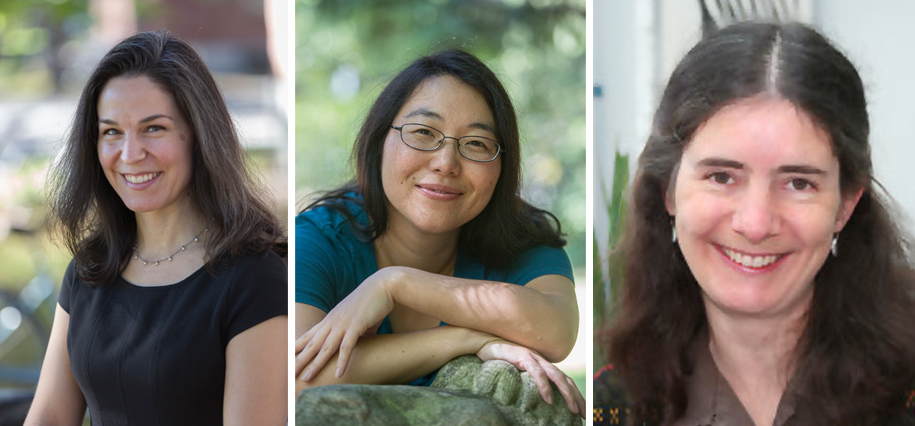Drawing on Environmental Studies Experience, Senior Teams Up with Hispanic Studies Professor to Produce Academic Article—in Spanish!
By Tom Porter“Writing this paper was a very special experience because I hadn’t ever thought there would be a way of bringing my two majors together,” said Katie Draeger ’24.
Draeger, who is about to receive degrees in environmental studies and Hispanic studies, recently cowrote a Spanish language article with Associate Professor of Romance Languages and Literatures Carolyn Wolfenzon Niego—an article that has been accepted for publication in an academic journal.

The thirty-page piece—titled (in translation) “Composting Writing: The Company of Veronica Gerber Bicecci” —will be featured in the cultural and literary journal Confluencia later this year. It examines the themes explored in a book by Mexican author and visual artist Verónica Gerber Bicecci.
The book (La Compañía in Spanish, The Company in English) employs a variety of tools, visual and literary, to describe the devastating effect that mercury mining operations have had on San Felipe Nuevo Mercurio, a now-abandoned town in central Mexico (in the state of Zacatecas). The community suffered major environmental damage because of the mine and continued to suffer after becoming a dumping ground for toxic chemicals following the mine's closure around 1980.
Draeger was first introduced to the book last semester in Wolfenzon’s senior class Ghosts in Mexican Literature and wrote a paper on it. “This was the first time I had read something in Hispanic studies that pertained to environmental themes, so this was a great opportunity to bring my knowledge from ES to a different discipline.”
Student and professor struck upon the idea of collaborating on a wider paper exploring Gerber’s ideas, a project which would leverage both of their strengths and lead eventually to the article. “I couldn’t have written this without Katie and vice-versa,” said Wolfenzon.

Themes relating to the recycling, reuse, and repurposing of both ideas and material are explored in the article, which focuses and how Gerber draws upon the work of other writers and artists as she tells the story of the town's decline.
Gerber’s work, explained Wolfenzon, combines the paintings of Mexican muralist Manuel Felguérez and short stories from Mexican writer Amparo Davila. “Gerber juxtaposes this material to create her book and, by using these different layers of content, she makes a point about ‘extractivism’ [as harmful mining is called] in contemporary Mexico. Katie’s help in explaining to me some of the environmental science behind this concept was invaluable when it came to writing the article,” she added.
As for Draeger, Wolfenzon said it was a great experience for her, as an undergraduate, to be able to coauthor an article published in a peer-reviewed academic journal. “It was epic,” said Draeger. “It was both fun and exciting to write a paper that not only looked at environmental issues in Latin America, but to do so from a literary perspective. Being able to lean into the analytical and symbolic elements of this book, and not lose that in the broader discussion of the environment, was incredibly rewarding,” she added.
Draeger said she may consider going to graduate school, but not yet. After Bowdoin, she heads to New York City to work in the nonprofit sector, taking up a position with an affordable housing developer where she will be working primarily with the Spanish-speaking community.
Draeger is a perfect example of how the study of language and literature can complement and enhance other disciplines, said Wolfenzon. “Katie’s knowledge of environmental issues was crucial for this paper, but she wouldn’t have been able to tackle it without her command of Spanish.”

This image was designed by author and artist Verónica Gerber Bicecci to represent environmental degradation in San Felipe Nuevo Mercurio. It is a live, constantly updating image (click here for updates), portraying the effects of mining and its consequences in the town by measuring three variables: work, replacement of workers for machines, and pollution in the mines. More details.



